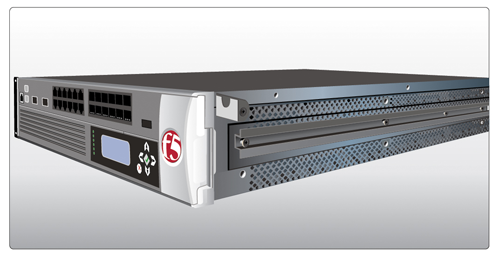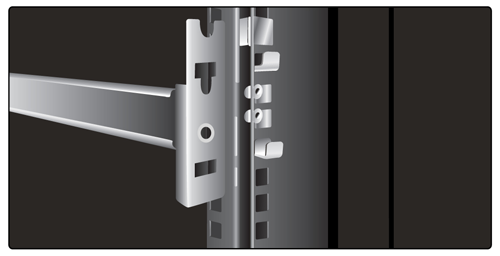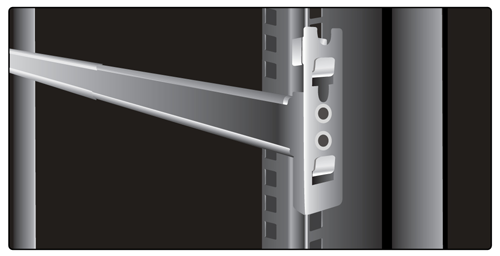Manual Chapter :
Installing a 4300 Platform Using an Optional
Applies To:
Show Versions
FirePass
- 7.0.0, 6.1.0, 6.0.3
BIG-IP SAM
- 8.0.0
Installing a 4300 Platform Using an Optional Rail-Mount Kit
When you received your 4300 platform, the unit included rack-mount ears, suited for a standard type of mount. With rack-mount ears, the unit is bolted directly to the rack.
As an option, you can use an alternative type of mount, called a rail mount, which allows you to slide the unit in and out of the rack at will. To install this rail-mount kit and install the unit into the rack, you need to perform the following tasks:
The first step in installing a rail-mount kit is to remove the rack-mount ears from the unit itself. Commonly referred to as rack-mount ears, this hardware must be removed before you can install a rail-mount kit.
Figure A.1 A rack-mount ear on a 4300 platform
To remove the rack-mount ears from the unit, locate the four screws that hold the rack-mount ears to the unit and unscrew them. You must do this for both rack-mount ears, one on either side of the unit. Save the screws you removed for the next procedure.
After you have removed the rack-mount ears from the unit, you must install the rail-mount kit. The rail-mount kit consists of these parts:
| Two inner rails that you attach to either side of the unit. Once the kit is installed, these inner rails slide into the outer rails that you install onto the rack. |
| Two outer rails that you attach to the rack. The inner rails that you install on the sides of the unit will slide into these outer rails. |
The first task in installing the optional rail-mount kit is to attach an inner rail and a stop to each side of the unit. Figure A.3 shows the unit with an inner rail and stop attached to one side.
Figure A.3 An inner rail with stop installed
| 1. | Attach an inner rail to each side of the unit, as shown in Figure A.3, using the four screws that you removed from each rack-mount ear. Note that each side requires four screws. |
| 2. | Attach a stop to each side of the unit, near the front, as shown in Figure A.3, using the screws provided in the kit. |
Once you have installed the inner rails and stops to the unit, you can attach the two outer rails to the rack. One outer rail is made specifically for the left side of the rack, while the other outer rail is made specifically for the right side of the rack.
Each outer rail includes a bracket on the front, with a square hole and a round hole. Figure A.4 shows a bracket with the square and the round holes.
Figure A.4 Outer rail and attached bracket
If the rack is a round-holed rack, use your own standard rack screws to attach the rail and bracket directly to the rack.
If the rack is a square-holed rack, you must use the additional, separate brackets included in the kit to attach the rail and bracket to the rack.
| 1. | Find the upper rail that corresponds to the side of the rack onto which you are installing the rail. |
| 2. |
| If the rack is a square-holed rack, hang one of the separate brackets provided with the kit onto each end of an outer rail, and then use the screws provided to attach each rail onto the rack. To accomplish this task, you will use a total of four separate brackets (two per rail), and eight screws (two per bracket). |
Figure A.5 Outer rail with attached bracket installed
| 1. | Slide the unit into the rack, fitting the inner rails of the unit to the outer rails of the rack. |
After you have installed the unit into the rack, you need to connect certain cables and other hardware. To perform these tasks, see the appropriate section in Chapter 2, Installing the 4300 Platform.










